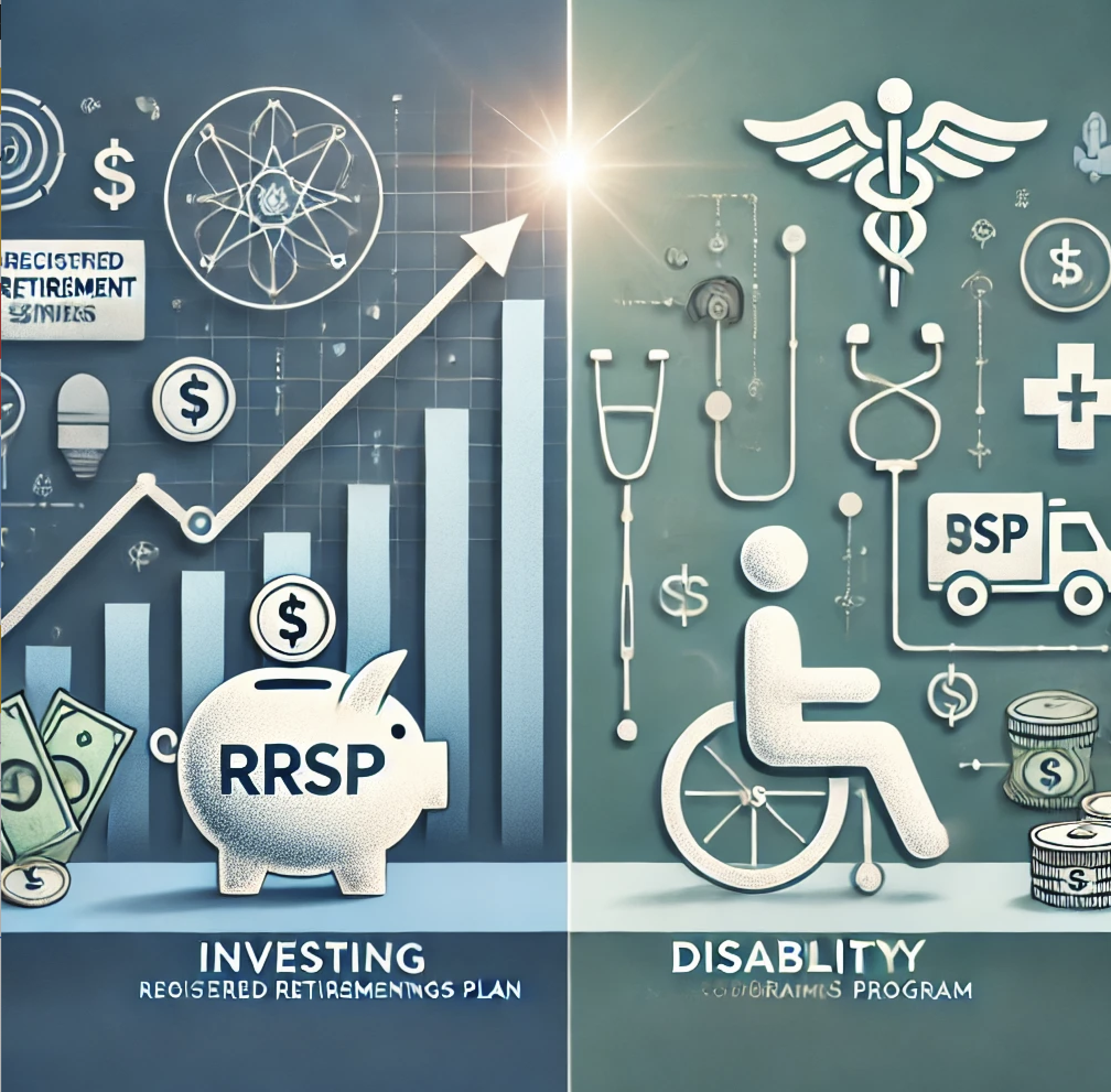Maximize Your RRSP or Disability Investment: HELOC vs. Refinancing Explained

If you’re looking to use your home equity to invest in a Registered Retirement Savings Plan (RRSP) or a Registered Disability Savings Plan (RDSP), you have two primary options:
Home Equity Line of Credit (HELOC)
Mortgage Refinance
Both options allow you to tap into your home’s equity, but each works differently. Here’s a breakdown to help you decide which option is better for your investment strategy.
1. Using a HELOC to Invest in an RRSP or RDSP
A Home Equity Line of Credit (HELOC) allows you to borrow against your home’s equity on an as-needed basis. You only pay interest on the amount you use, and you can re-borrow once the balance is repaid.
Benefits of Using a HELOC
Flexibility: Access funds as you need them, not all at once.
Interest-Only Payments: You only pay interest on the amount you borrow.
Lower Upfront Costs: Unlike refinancing, setting up a HELOC typically has minimal fees.
No Mortgage Disruption: Your existing mortgage stays intact.
How to Use a HELOC to Invest in an RRSP
Open a HELOC with your bank or lender.
Withdraw the amount needed to maximize your RRSP contribution.
Use your RRSP contribution to reduce your taxable income.
Receive a tax refund from your RRSP contribution.
Use the refund to pay down the HELOC balance (reducing your debt faster).
How to Use a HELOC to Invest in an RDSP
If you qualify for a Canada Disability Savings Grant (CDSG), your contribution to an RDSP can be “matched” by the government.
Withdraw funds from the HELOC to maximize your RDSP contribution.
Receive matching funds from the government (up to 300% on contributions, depending on your income).
Use your investment returns and grants to repay the HELOC.
When a HELOC is Best
If you only need small, flexible amounts of cash over time.
If you want to use your tax refund to pay back the HELOC quickly.
If you’re comfortable with a variable interest rate.
If you’re looking for a low-cost way to access home equity without resetting your mortgage.
———————————————-
2. Using a Mortgage Refinance to Invest in an RRSP or RDSP
A Mortgage Refinance involves replacing your current mortgage with a new, larger one. The difference between the new mortgage and your existing mortgage balance is given to you as a lump-sum cash payout.
Benefits of Using a Refinance
Lump-Sum Cash: Get a large amount of money all at once, ideal for large RRSP or RDSP contributions.
Lower Interest Rates: Refinance rates are typically lower than HELOC rates.
Fixed Payments: Payments are fixed, unlike a variable-rate HELOC.
Debt Consolidation: If you have high-interest debt, you can pay it off as part of the refinance.
How to Use a Refinance to Invest in an RRSP
Refinance your mortgage and cash out the extra equity.
Use the cash to maximize your RRSP contribution.
Receive a large tax refund.
Use the refund to pay down your mortgage principal.
How to Use a Refinance to Invest in an RDSP
Refinance your mortgage to access a large sum of cash.
Use the cash to make a large RDSP contribution.
Maximize the government grant by making a one-time, large contribution.
Benefit from matching contributions from the government and use the investment returns to pay down the mortgage.
When a Refinance is Best
If you need a large lump sum to make a big RRSP or RDSP contribution.
If you want to lock in a lower mortgage rate.
If you want to consolidate high-interest debt (like credit card balances) into a lower-rate mortgage.
If you’re looking for stable payments instead of a variable rate.
HELOC vs. Refinance: Comparison
Criteria |
HELOC |
Refinance |
|---|---|---|
How You Access Funds |
On-demand, as needed | Lump sum payout |
Interest Rates |
Variable (can fluctuate) | Fixed or variable (lower than HELOC) |
Repayment |
Pay interest only on what you borrow | Full repayment with your mortgage |
Upfront Costs |
Minimal (some banks waive fees) | Legal fees, appraisal fees, closing costs |
Flexibility |
Withdraw and repay anytime | Fixed payments over the mortgage term |
Use Case |
Small RRSP/RDSP contributions | Large, one-time RRSP/RDSP contributions |
Impact on Mortgage |
No change to mortgage | Replaces existing mortgage |
Tax Refund Benefit |
Can use the refund to pay off HELOC | Can use the refund to pay down mortgage |
Interest Deductibility |
Possible for investments (ask tax advisor) | Not deductible for RRSP contributions |
Each Office is Independently Owned & Operated • Brokerage 13072 | © Copyright 2024 . All Rights Reserved